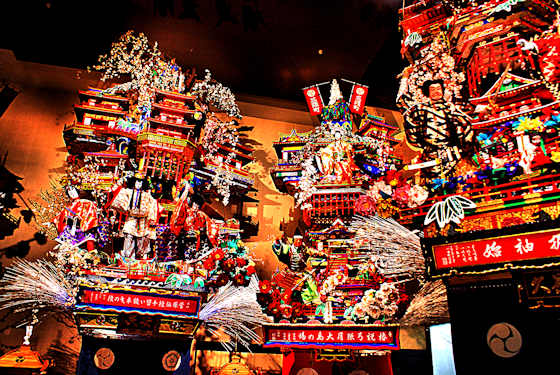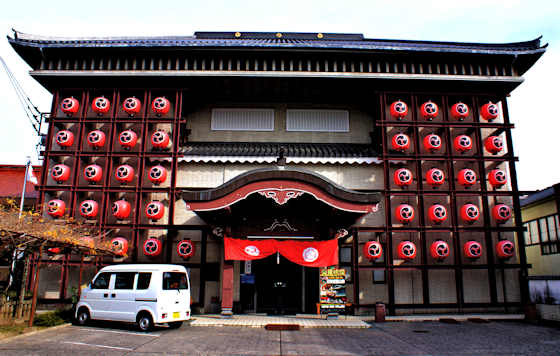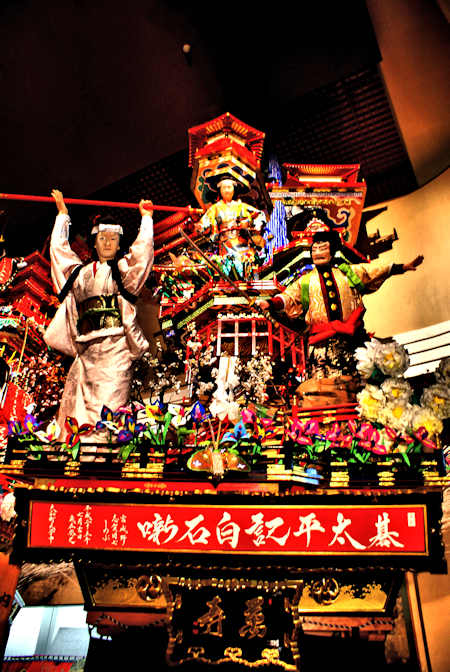Thursday, August 29, 2024
Karatsu Kunchi Hikiyama
Tuesday, August 27, 2024
Dance of the Herons Sagimai in Tsuwano
The best place to see it is in the former castle town of Tsuwano in the mountains of western Shimane close to the border with Yamaguchi, where the dance has been kept alive for more than four centuries after it disappeared from Kyoto.
In 1958 Tsuwano created the Kosagi Odori, literally the Heron Chick Dance, as way to get the towns children involved , and it has now become a feature of the festival every year.
One final note,.... Herons are quite a few species of different birds, with the one represented in the sagimai most likely a Little Egret. There are several egret species in Japan, all white. What I would call a heron is the Grey Heron, called Ao Sagi, blue heron in Japanese, and the egret is shira sagi, white heron.
Sunday, March 3, 2024
Yodohime Shrine Shimenawa & Yamodo Festival
Saturday, August 12, 2023
Nagasaki Shinchi the Oldest Chinatown in Japan
Tuesday, February 15, 2022
Hita Gion Matsuri Museum
Hita Gion Matsuri Museum
Hita, the historic town in the mountains of Oita, is one of many towns throughout Japan with their own Gion Matsuri, the festival that originated in Gion, Kyoto.
Friday, February 5, 2021
Yatsushiro Myokensai
Yatsushiro
I arrived at Yatsushiro Shrine in late November on the 44th day of my first walk around Kyushu. A few days earlier was the Yatsushiro Myokensai Festival which originates from the shrine. On display at the shrine are some of the "creatures" that are paraded during the festival.
Friday, October 25, 2019
Kagoshima Jingu
After getting my hotel room in Hayato I set off the explore the local shrine, Kagoshima Jingu, and was delighted to discover that this evening was going to be the Summer Matsuri and the shrine approach was lined with stalls setting up and large lanterns decorated with chidrens painting hung everywhere.
The wooden horse at the entrance was far more decorative than any other shrine horse I had seen because this one is how a horse is decorated for the Hatsu Uma Festival when the horse leads a procession to the shrine. The festival is said to originate from a dream had by the regional Daimyo who had slept at the shrine.
There are a lot of secondary shrines throughout the extensive grounds as this was the Ichinomiya, the highest ranked shrine in the province of Osumi which today forms the eastern half of Kagoshima Prefecture. The main enshrined kami are Hoori and Toyotamahime, the grandparents of the mythical first emperor Jimmu and legend says it was founded at that time.
This is the southern Kyushu variation of the founding myth of Japan that more usually places the activity further north in the mountains of Miyazaki around Takachiho. The ceiling of the main hall is decorated with hundreds of paintings of regional plants.
Also enshrined here are Emperor Ojin and his mother Jingu, collectively enshrined as Hachiman. There are quite a few huge camphor trees in the grounds too....

































































